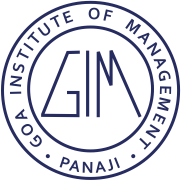MBA Aspirants are expected to know the current trends of country’s economy. SENSEX is often indicated as one of the crucial market index. This general awareness article on SENSEX will help you in WAT/Essay/GD and PI also.
Read: How is SENSEX an important signal for robust economic growth?
The S&P Bombay Stock Exchange Sensitive Index, also known as the SENSEX, is a stock market index of 30 established companies listed on the Bombay Stock Exchange.
Some of the 30 companies are Infosys, Tata Motors, HDFC Bank, ICICI Bank and Coal India. These 30 companies represent various industrial sectors of the economy in India and are considered some of the largest and most actively traded stocks.
When the prices of the stocks of these companies increase by 1%, the SENSEX number increases by 1% too. For example, if the SENSEX number was 10,000 yesterday and India’s top 30 companies grew by 1%, today’s SENSEX number would be recorded at 10,100. Similarly, if these companies drop by 1%, the SENSEX would drop from 10,000 to 9,900.
Just like most indices in the world, the SENSEX began with an arbitrary number 100 on 1st January 1979. The SENSEX number at any point in time is irrelevant – what is important is how it changes over a period of time.
So, if the SENSEX number increased from 10,000 to 15,000 in the last one year, it would mean that the wealth of the shareholders has increased by 50% in the same period. SENSEX is the shorthand for the Indian stock market and it is a good indicator of how the Indian economy is performing.
In fact, economists believe that the SENSEX is a leading indicator. This means that the movement of the SENSEX will predict the performance of the Indian economy.
So, if the SENSEX is deteriorating, it means that the probability of the Indian economy picking up is quite slim. On the other hand, if the SENSEX is growing, it means that the probability of the Indian economy growing in the future is pretty high too.
Recently, the SENSEX increased from 18,000 in August 2013 to almost 22,000. Many analysts and economists believe that this is the beginning of another bull run, and that Narendra Modi is set to revive the economy and enhance business confidence in light of the coming elections. Given the slow growth rate of the Chinese industrial production and retail sales, investors fear that China is entering an economic slowdown.
Read More : Impact of 'Make in India', Pound or Dollar which is More Bigger than Rupee and How It Impacts?
In addition, a referendum in Crimea over its bid to separate from Ukraine and join Russia has added to the anxiety of the investors. This is the reason why foreign institutional investors are entering the Indian stock market.
The SENSEX is an important signal for robust economic growth – investors either buy or sell shares depending on the state of the economy.
For example, if the price of a share goes up, the probability of investors selling their shares is high. On the other hand, if the price of a share goes down, the probability of investors selling their shares is low.
These dynamics are reflected in the SENSEX and this ultimately generates a rough path that the Indian economy will take in the near future. So, all in all, if one is keen to understand the shape that the economy will take, he/she should look at the SENSEX.
Read More : Biscuit Industry in India, Ease of Doing Business Rankings - A Boost for India
Read More : Writing Instrument Industry in India, How NPA Rots Banking System?
Stay informed, Stay ahead and stay inspired with MBA Rendezvous






